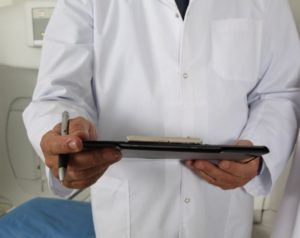A new study revealed that radiologists’ workload for on-call services has doubled over the last seven years. The study also showed that the rise in emergency department visits has not increased as much as the on-call workload. The ratio of on-call and emergency department visits stands at 2:1 as of now.
The Study
The “European Journal of Radiology” recently published a study that compared the rise in the number of patients visiting the emergency departments to the number of people opting for on-call services. The team of researchers referred to data collected over a single time frame for the comparison.
The researchers collected data over the time of 2012 to 2019. They focused on CT orders made during the on-call hours between 3p.m to 8 a.m. The team also collected data for the weekends when the on-call workload remains considerably high.
The researchers transformed these numbers into RVUs (relative value units). The team compared the values with their ED visit counterparts to conclude.
The team found that Ct orders increased by 52% while the ED visits went up by only 23% during the same period. This rise in CT orders came from various laterals such as brain, spine, and abdomen scans. To the experts, this substantial rise was quite startling.

The Findings
The research has thrown some light on the radiologists’ work imbalances with special reference to ED visits and CT services. The work unfolded some astonishing facts. The team asserted that ED visits have increased by almost 30% over the recent decade.
On the other hand, the surge in CT requisitions has been around 330%. The numbers clearly established the extent of imbalance the radiology workers of these two laterals have experienced over the recent decade. Experts predicted that such an excessive workload may result in medical errors.
Causes Of Errors
Christine Dan Lantsman works at Sheba Medical Center, Israel in the Diagnostic Imaging Department. The study showed that emergency reporting in radiology suffered from several errors, especially during on-call hours. Christine and the co-authors mentioned in the study that the shortage of staff and lack of experienced radiologists at the site could have been the primary reasons for such errors. The study also found that number of errors was higher during the night than day.
The team of experts ascribed such an astonishing trend of ever-increasing CT order numbers to the following factors.
- Imaging has been incorporated within the purview of trauma protocols
- People have become more aware and conscious of serious and general health conditions
- Many do not adhere to the proof-based guidelines when they order imaging
The researchers further asserted that how the respective departments and radiologists cope with this increasing influx of responsibilities remains the most important issue.
To stay braced, the experts suggested radiographers, radiologists, and on-call ED workers adjust according to the changing volume of imaging and the complexities involved therein. Without a matching adjustment, radiology might fail to offer flawless medical care to patients. They further mentioned that the departments should implement appropriate measures to ensure top-notch patent care quality.
At SepStream®, we make sure that all your imaging-related requirements find an affordable solution. Our upgraded and advanced software solutions offer flawless and accurate results. Digitized methods followed by accurate outputs make us one of the leaders in the market. Explore our set of software-driven solutions to pick the most suitable one for you.